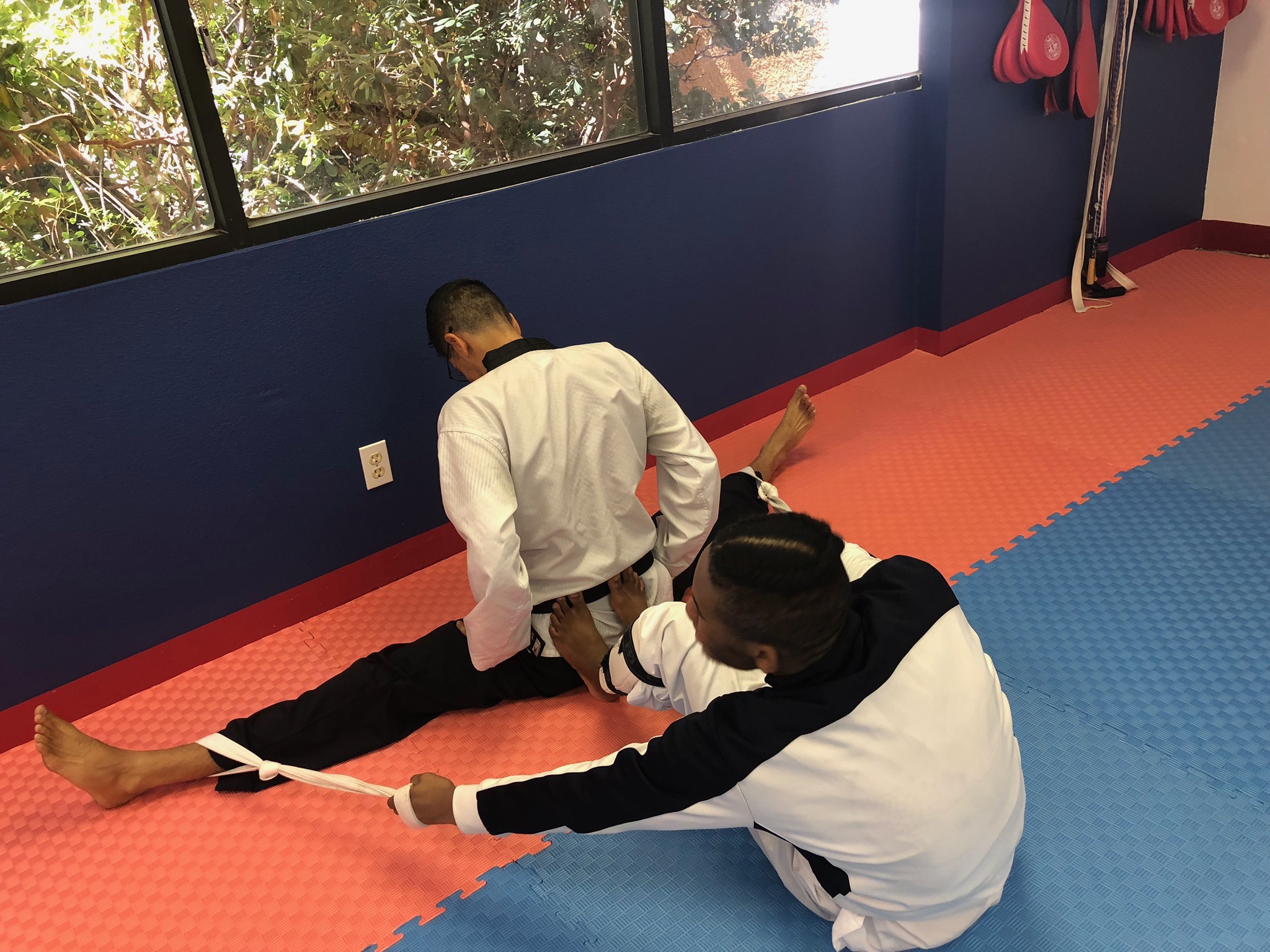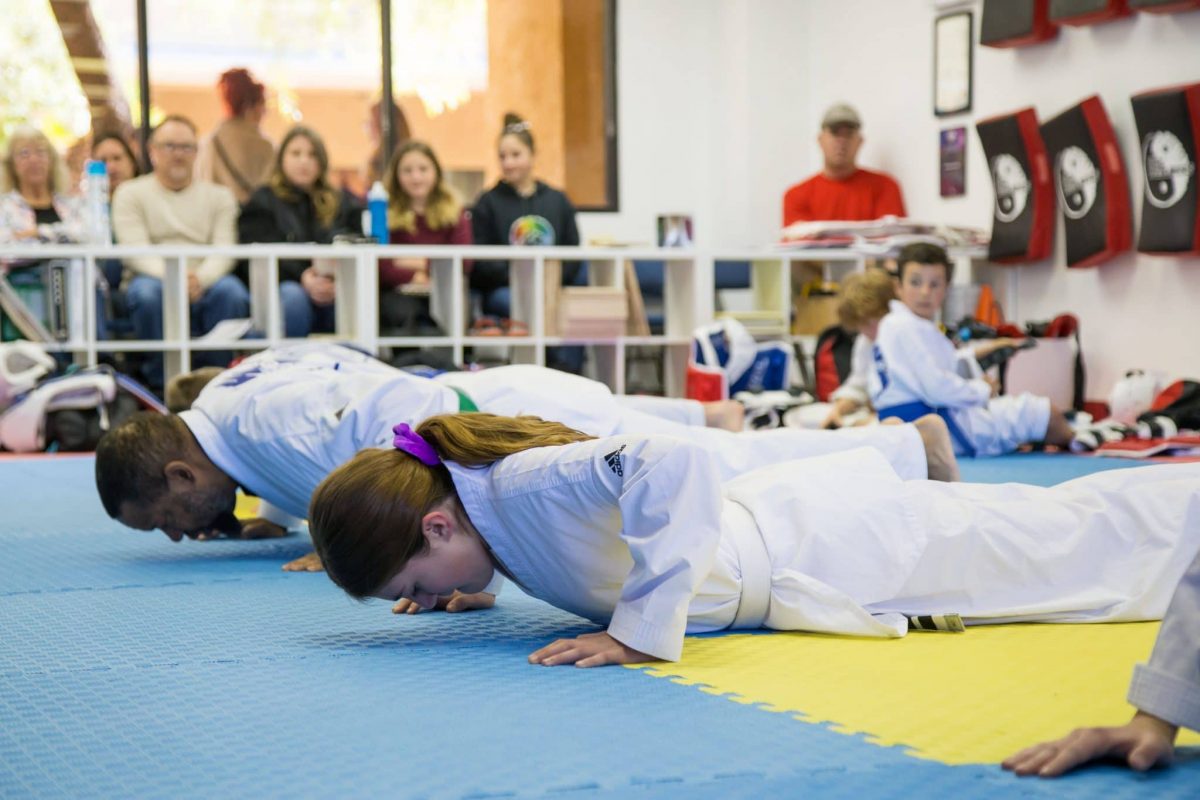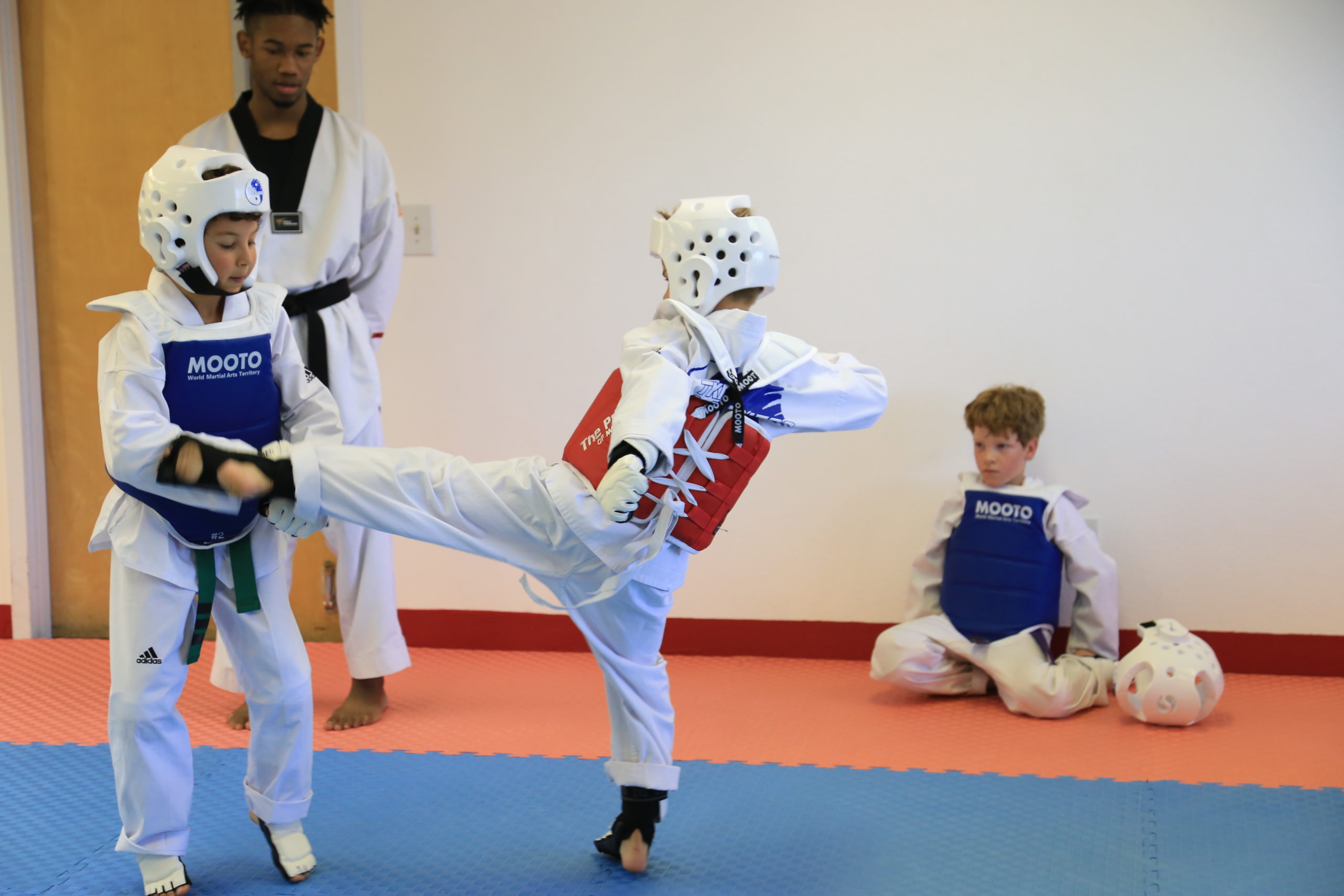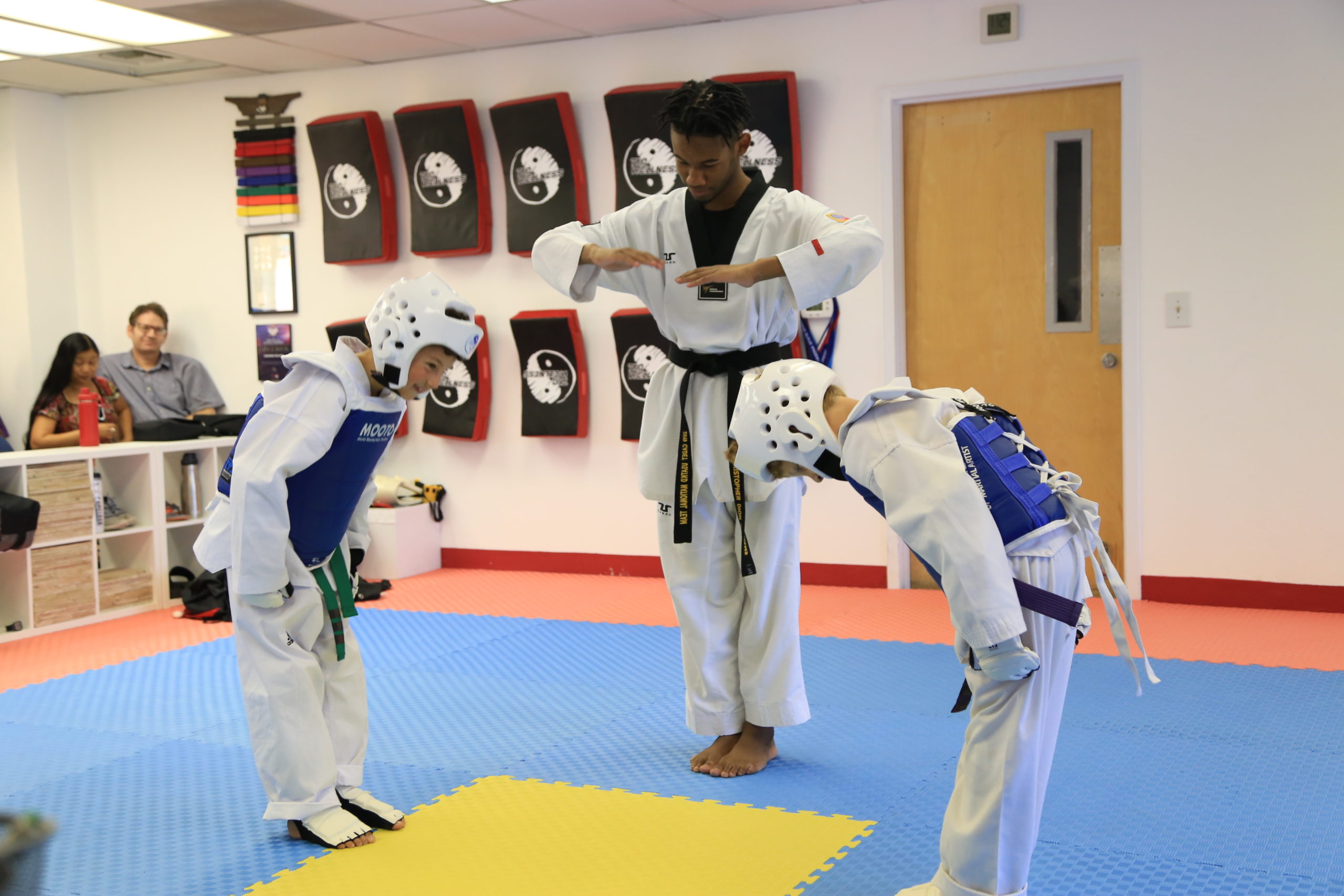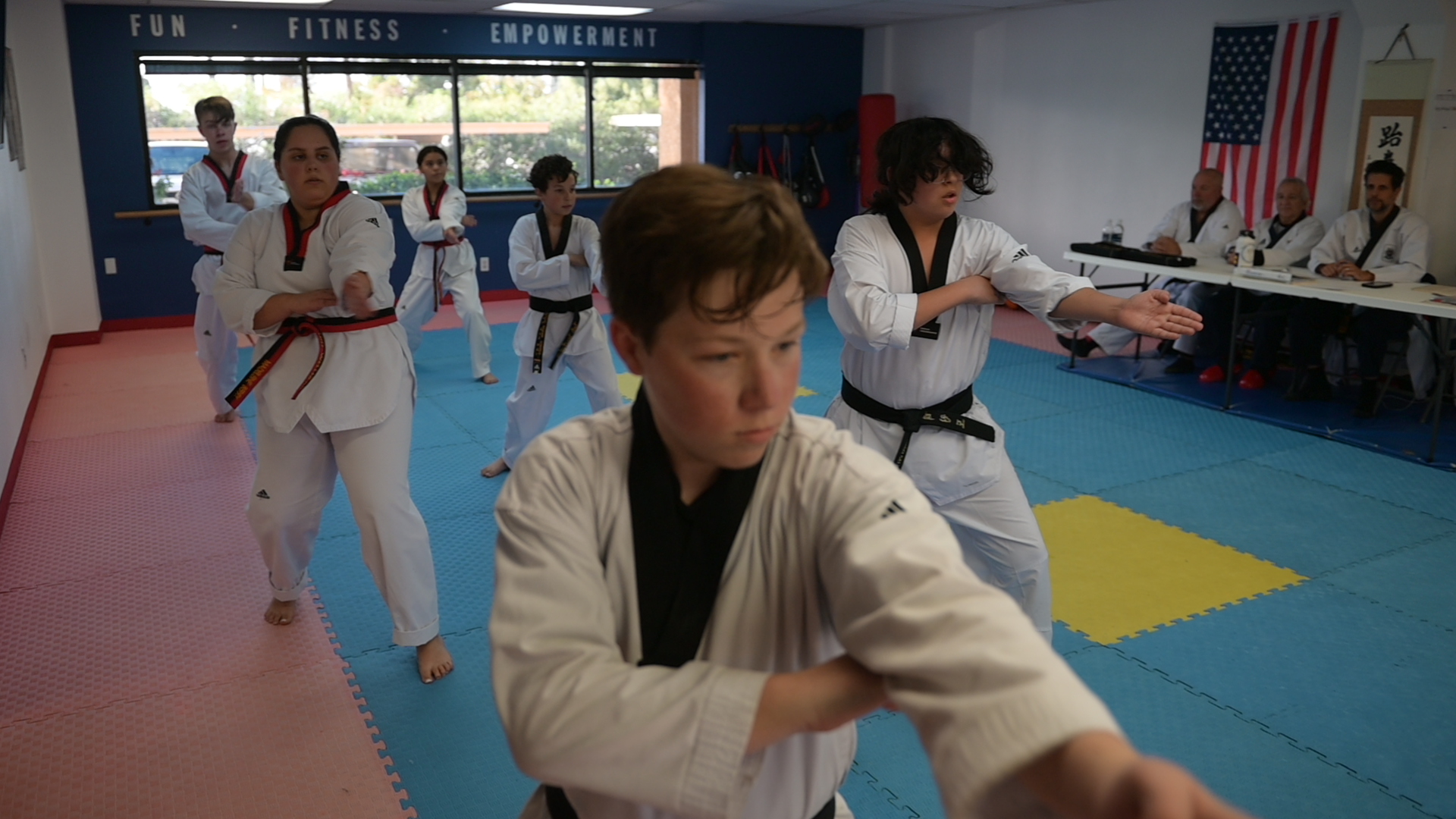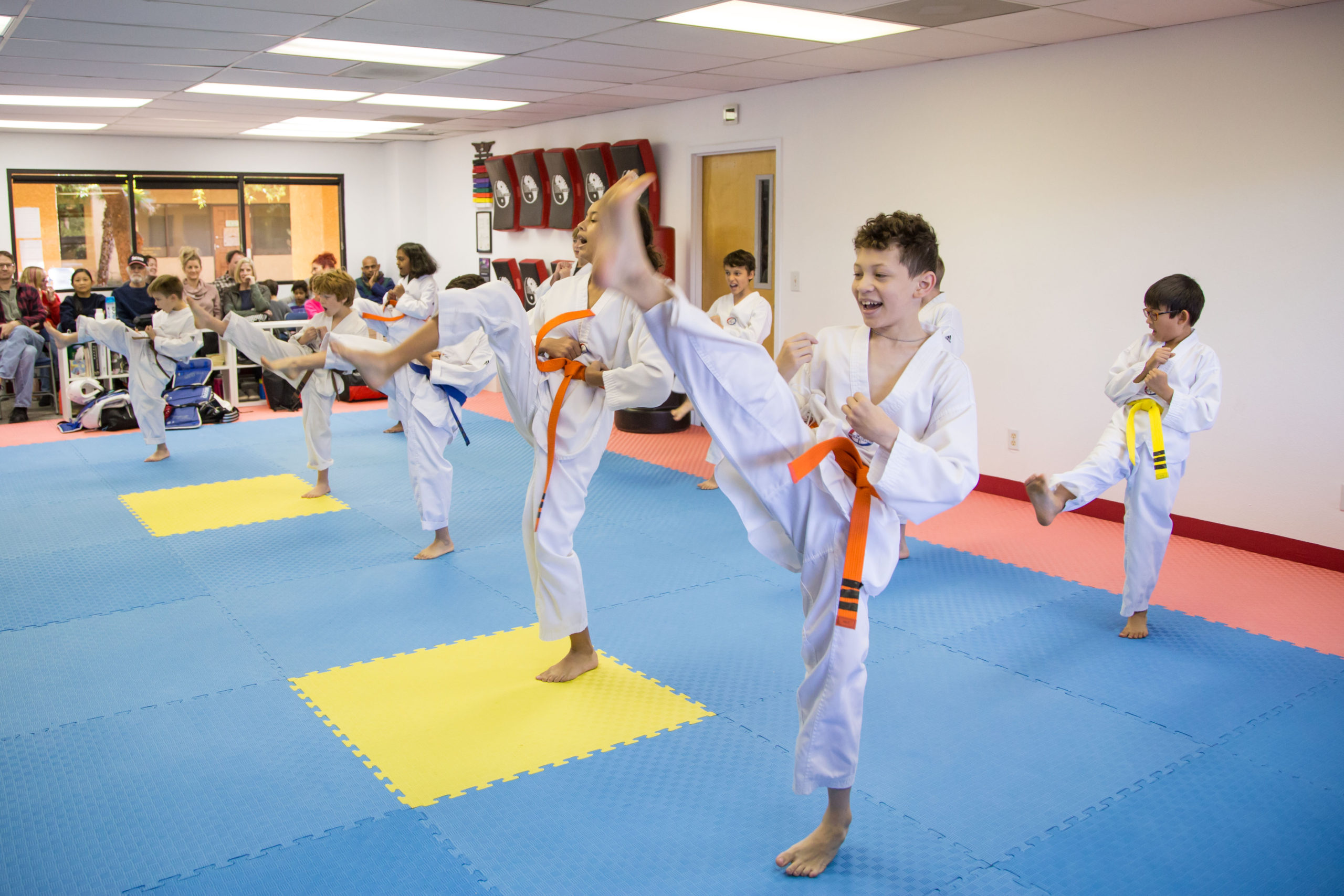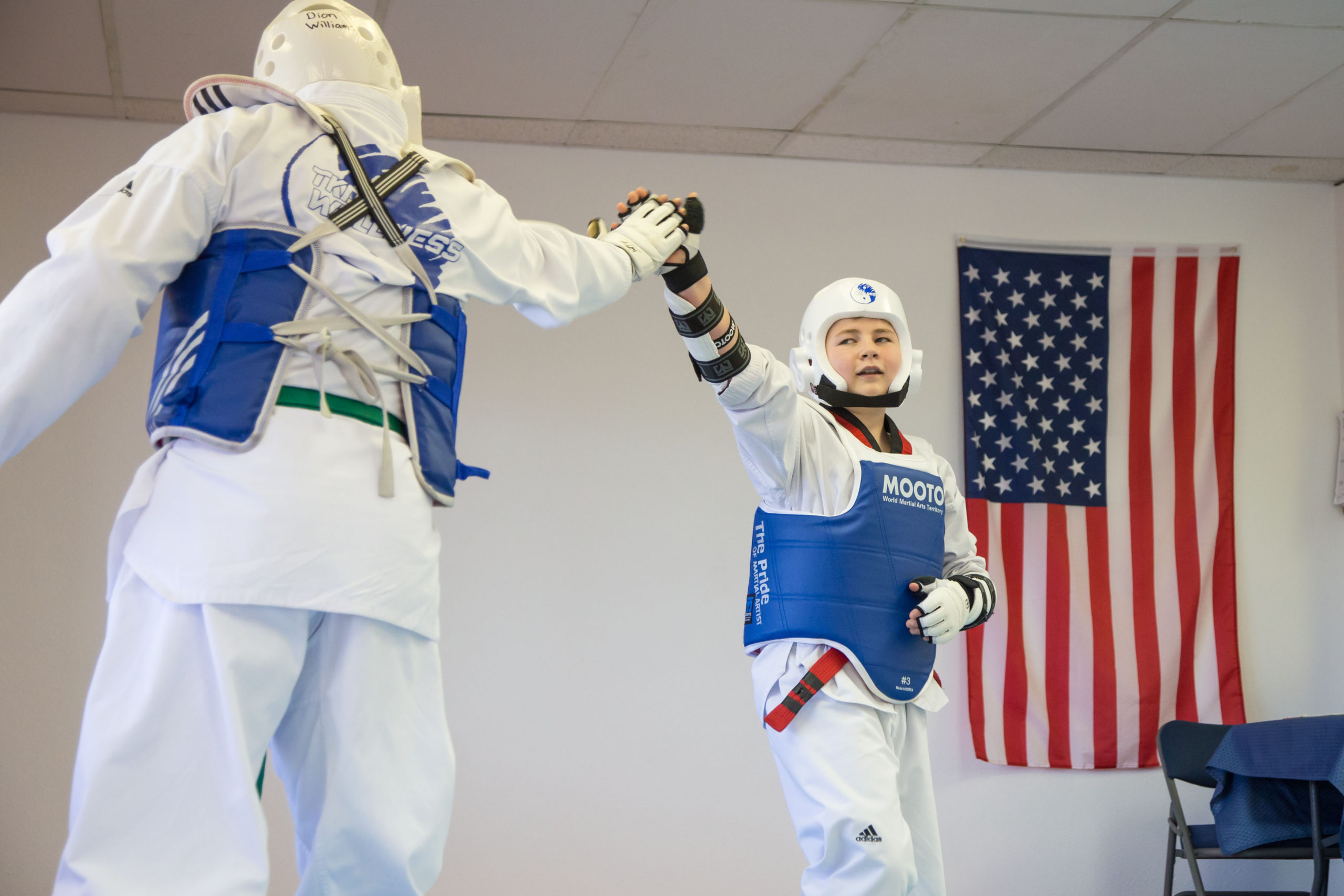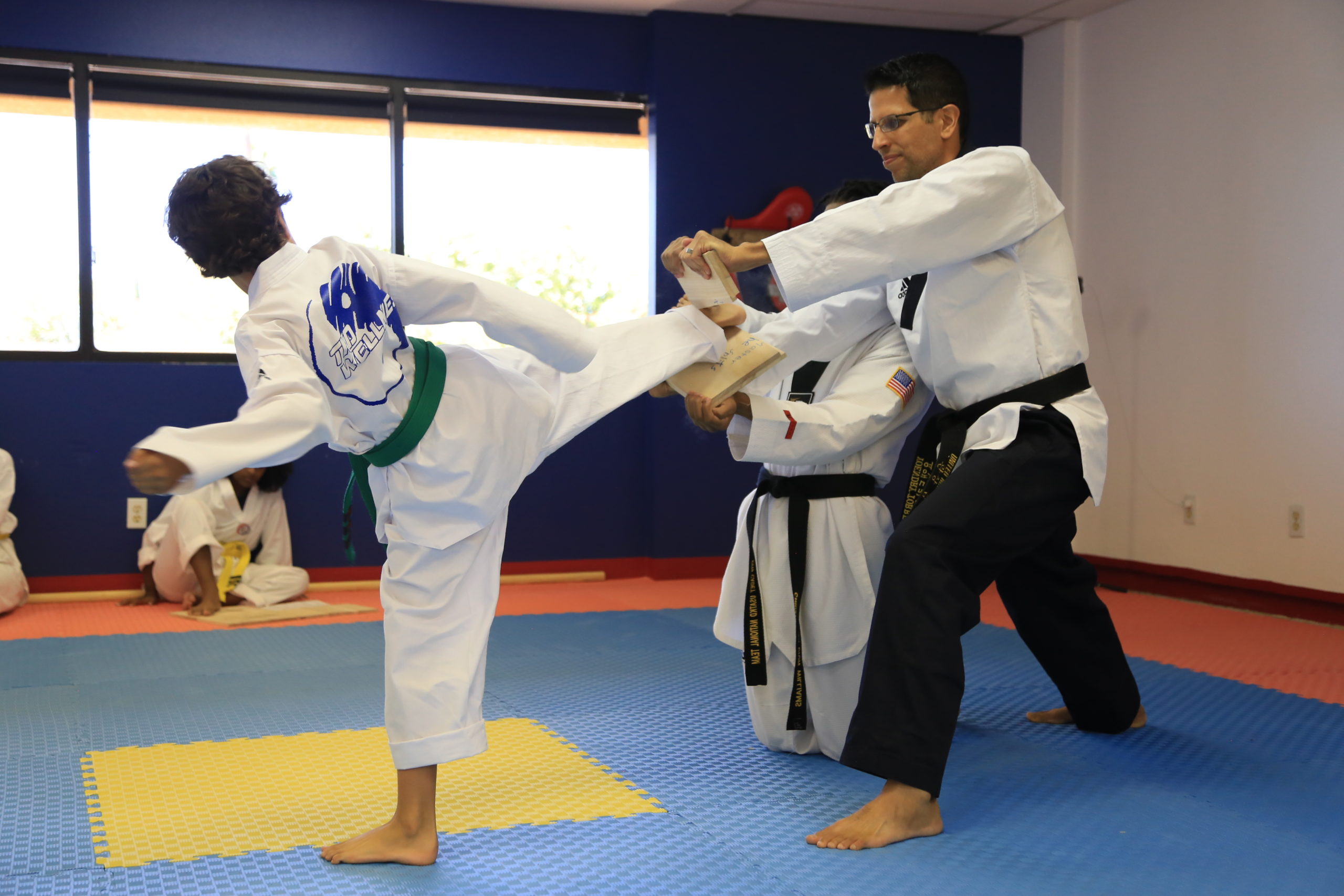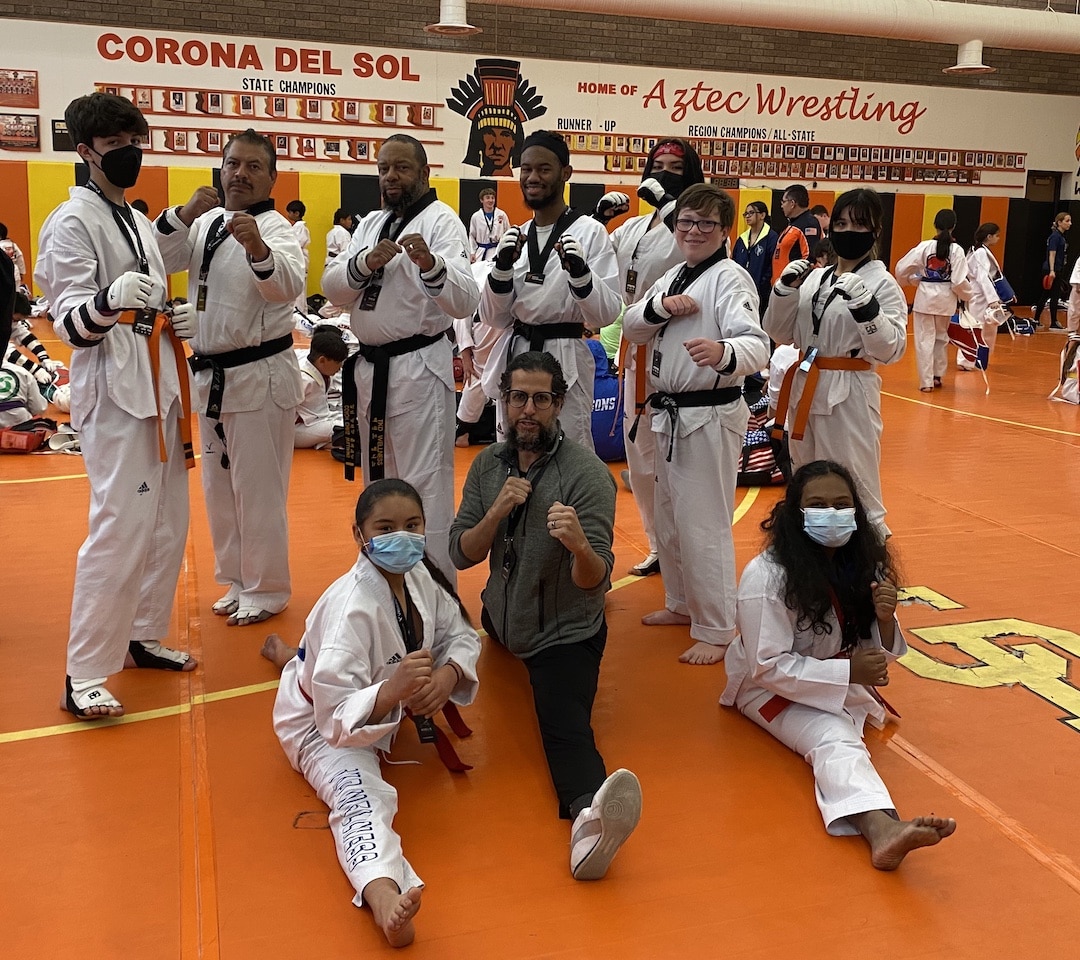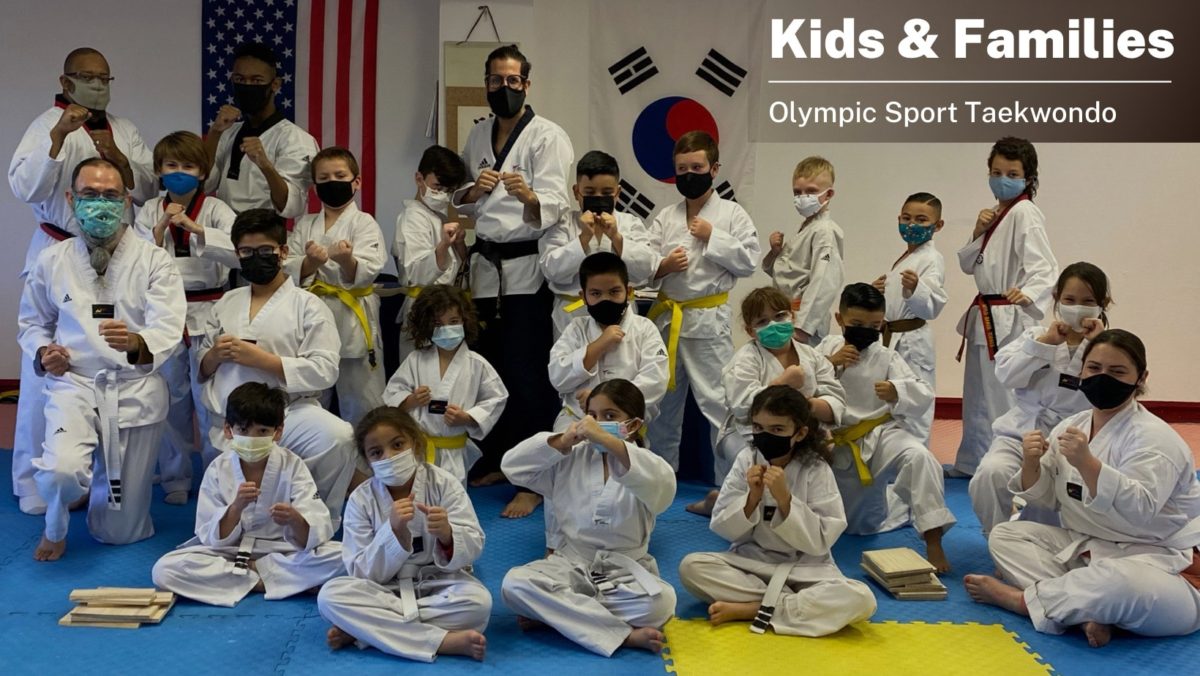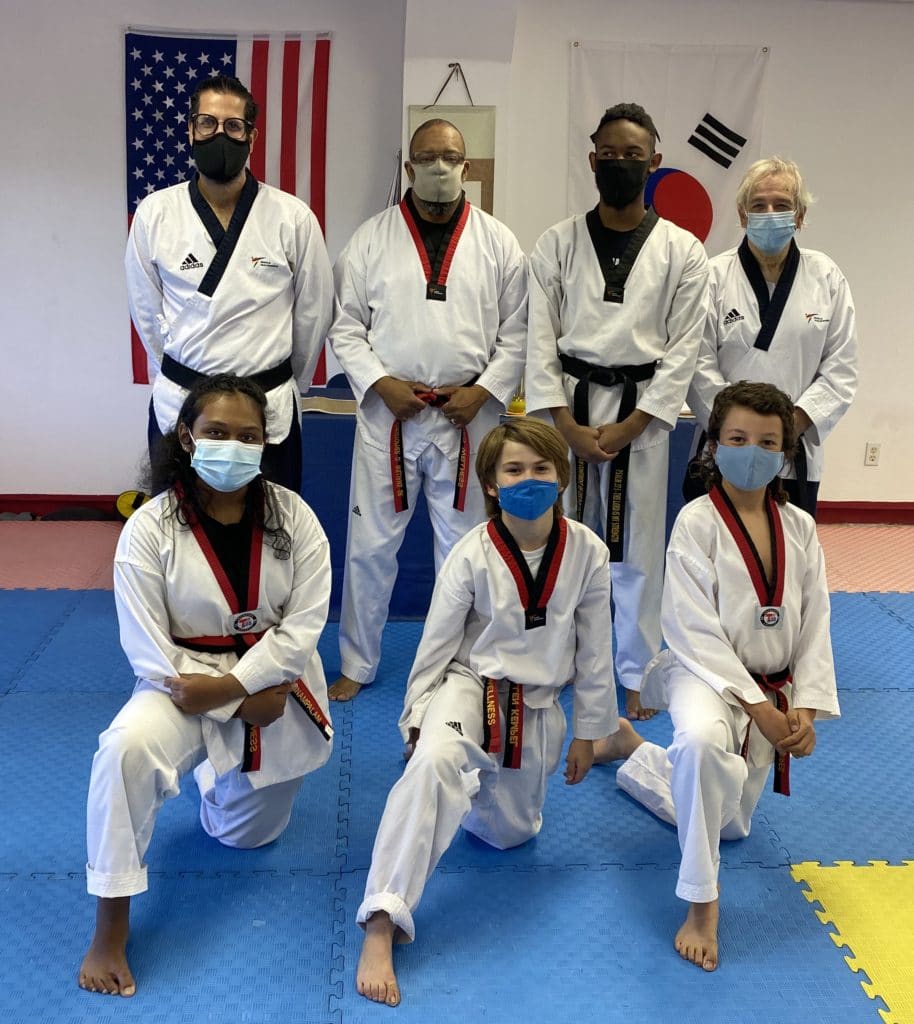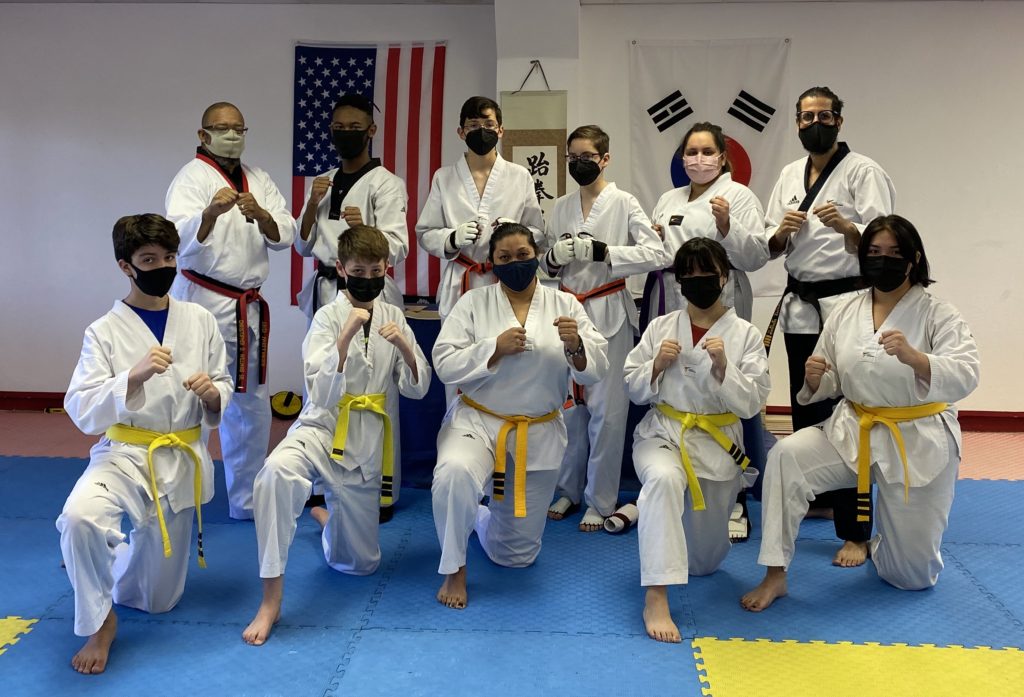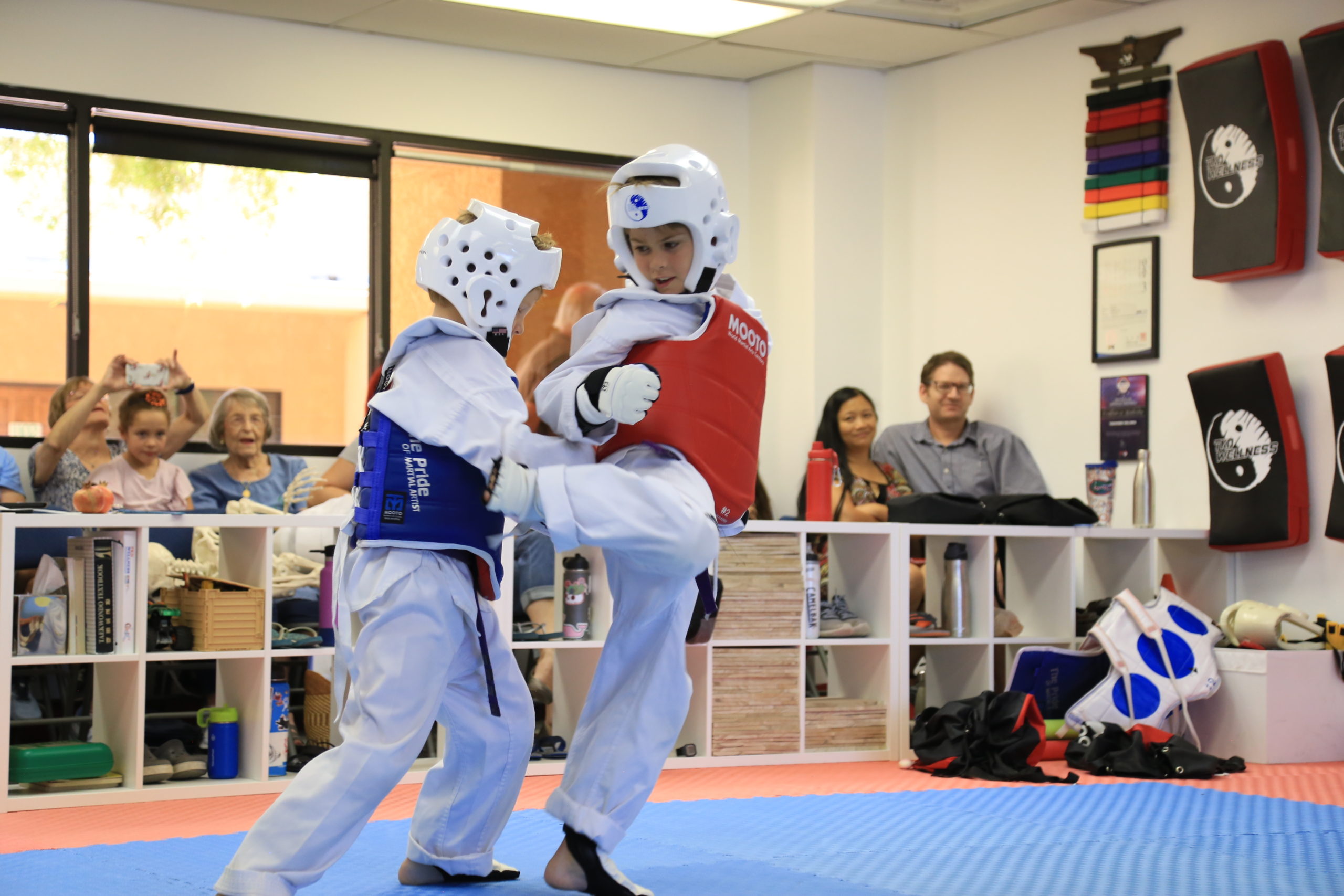
Taekwondo is a martial art that is known for its powerful and dynamic kicks. It’s an Olympic sport since 2000 and being successful in competition requires mastering a set of specific moves. In this blog post, we will provide an overview of the top moves for Olympic Taekwondo competition. Lets review current Olympic sport Taekwondo sparring rules and then highlight top techniques that will help you in competition.
Match Formats
Olympic Taekwondo sparring matches are conducted in a very structured format, designed to test the skills, agility, and strategy of the competitors. Each match is divided into three rounds, with each round lasting two minutes. There is a one-minute rest period between rounds, allowing athletes to recover and strategize with their coaches. The matches are held on an octagonal mat, providing a unique arena for the athletes to maneuver and attack.
Competitors are matched based on weight categories, ensuring fairness and safety in the competition. The objective is to outscore the opponent by landing accurate and powerful kicks and punches on the scoring areas: the torso and the head.
Point Structure
The point system in Olympic Taekwondo is designed to reward accuracy, power, and technique. Points are awarded based on the area of contact and the method of strike:
- Body Strikes: Kicks to the torso score two points. If the kick incorporates a spinning technique, it earns an additional two points, making it a total of four points.
- Head Strikes: Kicks to the head score three points. A spinning head kick earns an additional two points, totaling five points.
- Punches: Punches to the torso can score one point, emphasizing the importance of kicks in scoring higher points.
The scoring is electronically monitored, with sensors in the protective gear (headgear and body protector) registering the impacts. This system ensures objectivity and fairness in scoring.
Penalties
Penalties, or “Gam-jeom”, are given for various infractions, impacting the match’s outcome by awarding a point to the opponent. Common reasons for penalties include:
- Going out of bounds: Stepping outside the octagonal mat.
- Falling down: Losing balance and falling without being struck by the opponent.
- Avoiding the fight: Not engaging in combat or consistently backing away without attempting to score.
- Illegal actions: Executing prohibited techniques, such as hitting the back of the head, attacking below the belt, or using excessive force.
Understanding these penalties is crucial for competitors to maintain discipline and strategy during the match, avoiding unnecessary point losses.
Olympic Sport Taekwondo sparring is a thrilling and strategic component of the martial art, showcasing the athletes’ skill, agility, and mental fortitude. Whether you’re a competitor aiming for the Olympics or a fan enjoying the sport, knowing these rules enhances the experience and appreciation of Taekwondo.
Top Kicks
Kicks are a fundamental aspect of Taekwondo competition and are used to attack the opponent’s head and body. The roundhouse kick is one of the most popular and powerful kicks in Taekwondo. The side kick, back kick, axe kick and spinning hook kick are also commonly used in Taekwondo Olympic sport competitions. These kicks are effective for attacking the opponent from different directions. To execute these kicks with power and accuracy, it’s important to practice proper technique and maintain balance throughout the movement. Next we’ll go over how to execute each of these kicking techniques.
Executing a Taekwondo Roundhouse Kick
The Taekwondo roundhouse kick, or Dollyo Chagi, is a versatile and commonly used technique in sparring. To perform a roundhouse kick, start in a fighting stance with your knees slightly bent. Pivot on your support foot, turning your hips towards the direction of the kick. Raise your kicking leg, bending at the knee, and whip it around in a circular motion towards your target. Strike the target with the top of your foot or the ball of your foot for maximum impact. It’s crucial to maintain your balance by keeping your body leaning slightly back and your hands up for protection. After striking, quickly retract your kicking leg and return to your original stance, prepared for the next move.
Executing a Taekwondo Side Kick
The Taekwondo side kick, or Yop Chagi, is a powerful technique used for both defense and offense. To execute a side kick, begin by standing in a fighting stance with your feet shoulder-width apart. Pivot on your front foot, turning your body sideways towards your target while keeping your kicking leg’s knee bent and pulled up towards your chest. Your heel should be pointing towards the target. Then, extend your kicking leg swiftly towards your target, striking with the heel or the side of your foot. Ensure your supporting foot’s toes are pointing away from your target to maximize power and balance. Quickly retract your kicking leg and return to your fighting stance, ready for your next move.
Executing a Taekwondo Axe Kick
The axe kick, or Naeryeo Chagi, is known for its straightforward yet effective downward force. To execute an axe kick, start with a fighting stance. Lift your kicking leg straight up in front of you, as high as possible, keeping your leg as straight as your flexibility allows. The kick’s power comes from the downward motion, so swiftly bring your leg down, aiming to strike with the heel of your foot. The target can be the head, shoulder, or guard of an opponent. It’s important to maintain your balance by leaning back slightly as you execute the kick. After striking, retract your leg quickly to regain your stance and maintain readiness for further action.
Executing a Taekwondo Back Kick
The Taekwondo back kick, or Dwi Chagi, is known for its surprise element and potent force. To perform a back kick, start from a fighting stance. Look over your shoulder to spot your target, then pivot on your front foot, rotating your body 180 degrees. Lean forward slightly, and with a quick motion, thrust your kicking leg backwards, driving your heel into the target. It’s crucial to keep your kicking leg straight and your foot pointed, ensuring the heel makes contact. After the kick, quickly bring your leg back, rotating to face your target again, and resume your fighting stance. The back kick is particularly effective for counter-attacks, exploiting an opponent’s blind spot.
Executing a Taekwondo Spinning Hook Kick
The spinning hook kick, or Huryeo Chagi, combines power and deception, making it a formidable technique. Begin in a fighting stance and initiate the move by turning your head and shoulders in the direction of the kick, followed by your hips. Execute a 180-degree spin on the ball of your support foot, lifting your kicking leg in a semi-circular motion at the same time. The goal is to hook your foot around and strike the target with the heel. Control is key—your body should be slightly leaned forward throughout the spin, and your eyes should quickly find the target after the spin to ensure accuracy. After making contact, continue the motion to bring your kicking leg down and swiftly return to your fighting stance.
Combinations
In Olympic sport Taekwondo competitions, the use of kicking combinations plays a pivotal role in securing victory. These combinations are not just about showcasing an athlete’s skill set but are a strategic element that can catch opponents off guard and create openings for scoring additional points. Effective combinations involve a mix of speed, power, and unpredictability, allowing competitors to break through their opponent’s defense or counter their attacks effectively. For instance, a well-timed series of roundhouse kicks followed by a surprise back kick can disrupt an opponent’s rhythm and score valuable points. Moreover, kicking combinations are essential for maintaining offensive pressure and controlling the pace of the match. As competitors advance in skill, mastering the art of chaining kicks seamlessly becomes a critical aspect of their training, emphasizing the importance of fluidity, precision, and adaptability in high-level Taekwondo competitions.
In conclusion, Olympic Taekwondo competition requires mastering a set of specific rules and moves. Basic techniques such as punches, kicks, blocks, and strikes are essential to master. Kicks, spinning techniques, and combination techniques are also important for Olympic competition. To be successful in Olympic competition, it’s important to practice proper technique and to consistently train and refine these moves. Please visit TKD Wellness if you’re looking to start your Olympic sport Taekwondo journey.
Written by AI & Reviewed by Clinical Psychologist & Head Coach: Yoendry Torres, Psy.D.
Disclaimer: Please note that some blog posts may contain affiliate links and Sana Network will earn a commission if you purchase through those links at no additional cost to you. We use all of the products listed and recommend them because they are companies or products that I have found helpful and trustworthy. Our website is supported by our users.
